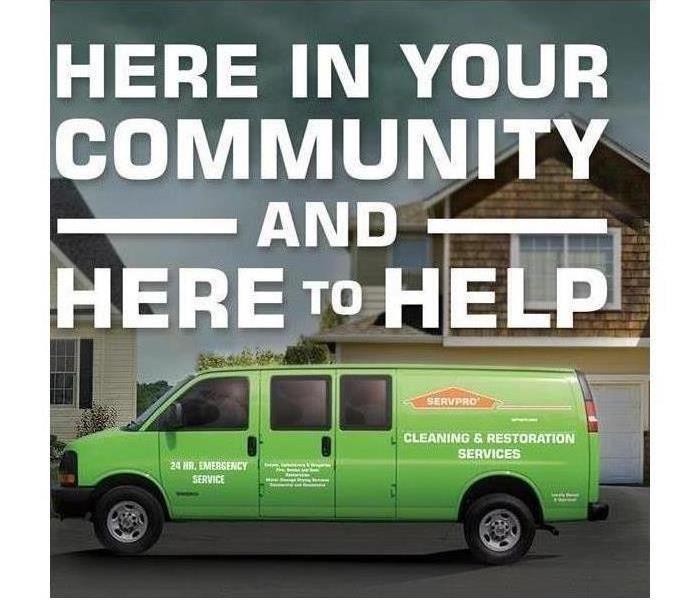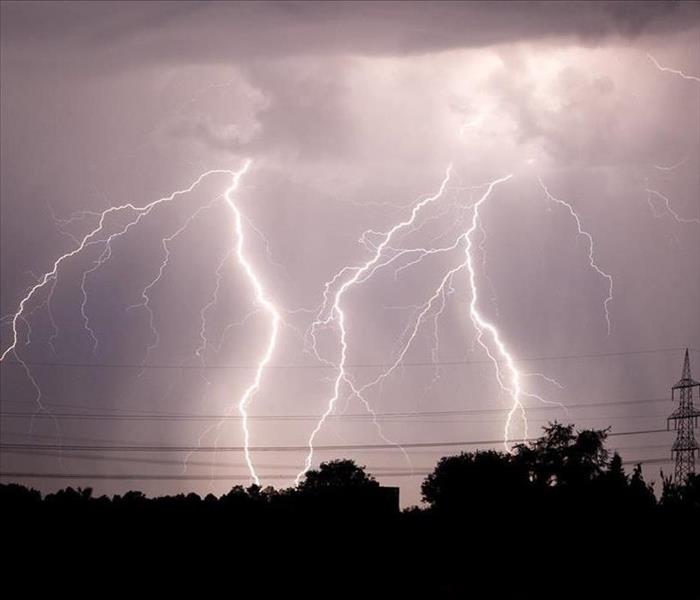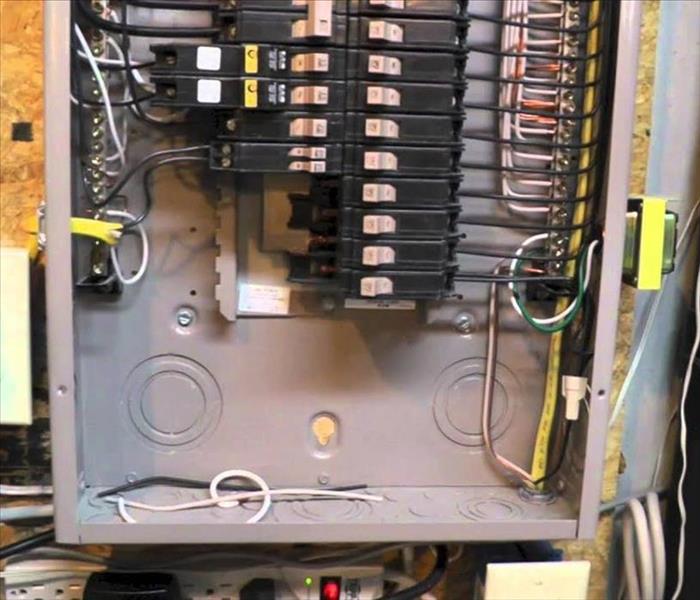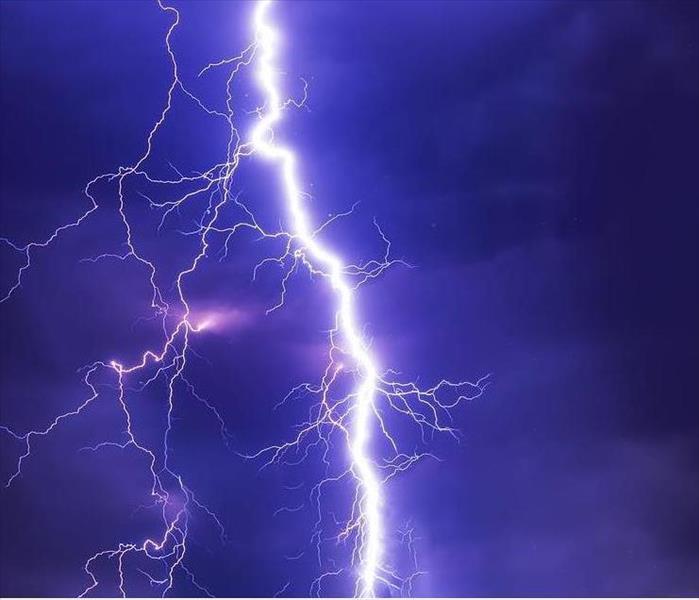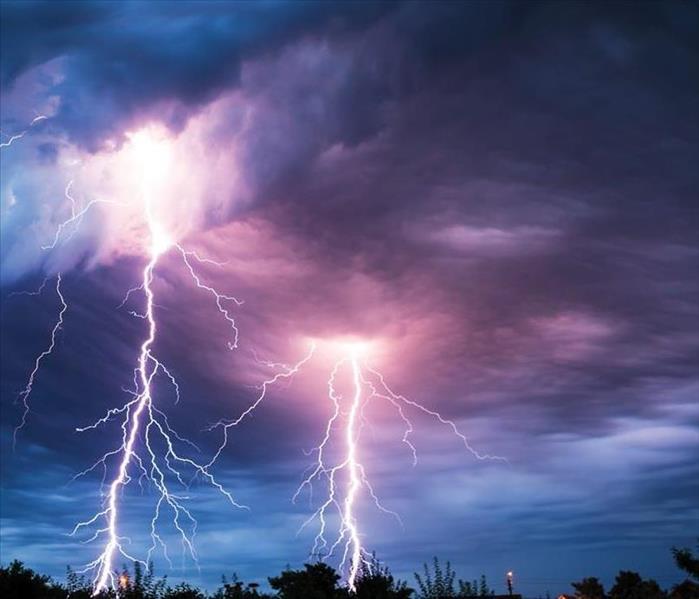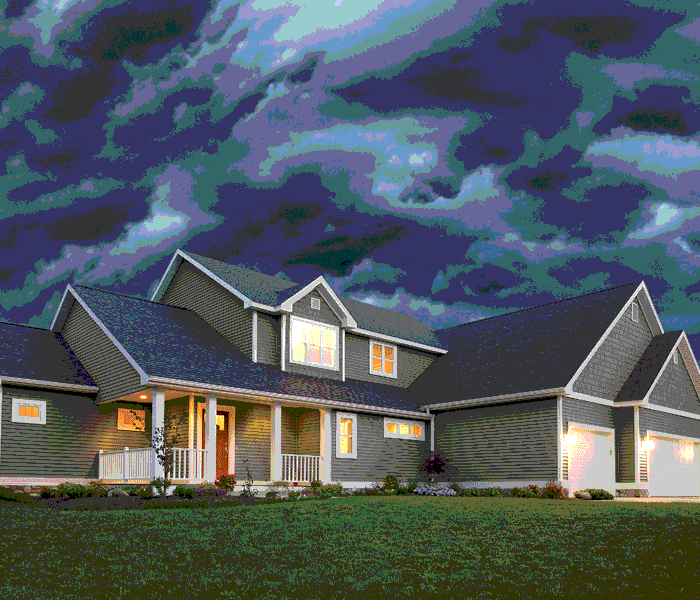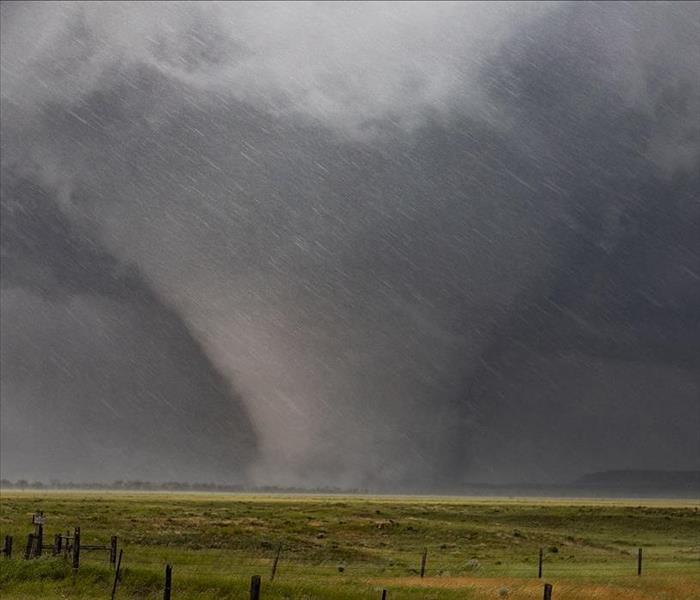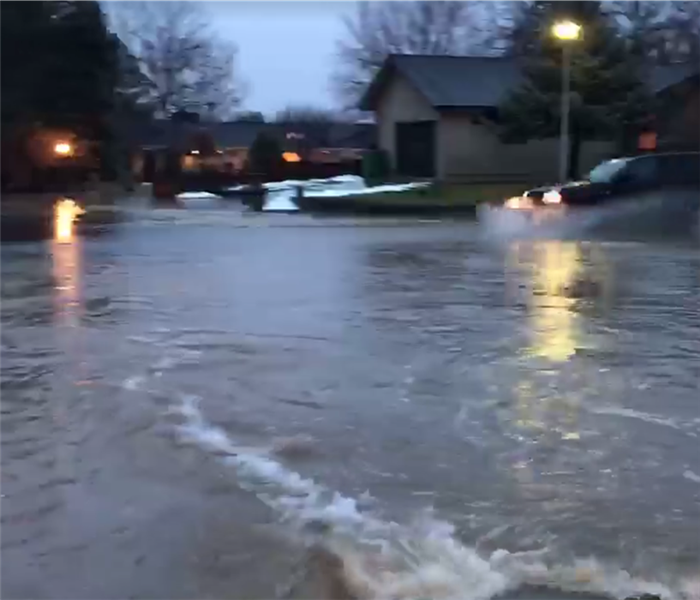Recent Storm Damage Posts
Do you need to worry about Hail Damage?
8/1/2022 (Permalink)
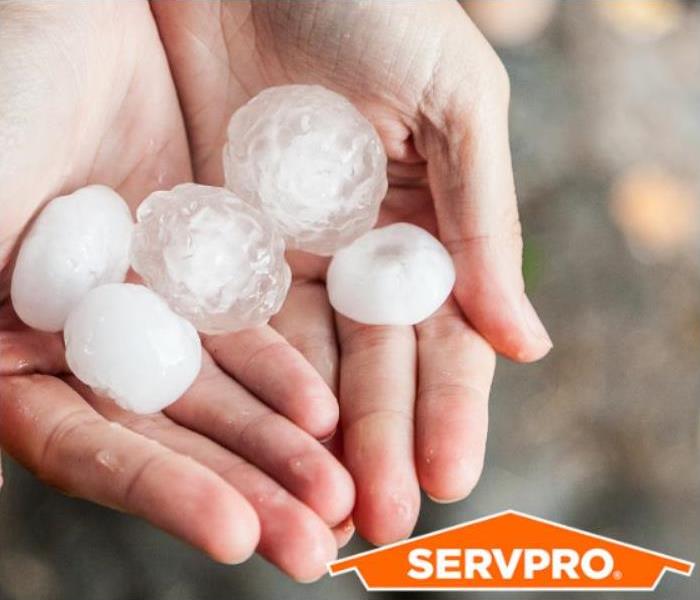 Hail can be so pretty.....and so devastating
Hail can be so pretty.....and so devastating
Signs of Hail Damage from the Ground and What that Means for YOUR Home.
Even if you can’t see your entire roof while standing on the ground, there are still some signs of hail damage that can be indicated without getting out a ladder. The presence of these signs is an indication that you might have more hail damage on your roof.
Dents and Dings on Your Siding or even Your Window Sills
Just by a quick walk around your property, you can easily check the siding and window sills for hail damage. If a hail storm caused significant dents and dings to these areas, it’s likely that your roof sustained heavy damage as well. Even just a faint ding to these surfaces could be cause for concern. External damage could lead to internal damage quite quickly.
Signs of Hail Damage From the Roof
Keep in mind that getting up on a roof and inspecting it can be very dangerous. You should take all possible safety precautions to protect yourself. When in doubt, leave the roof inspection to the professionals. If you are not sure who to call, contact SERVPRO of Bloomington/Pontiac. Even though we don’t do roof repair, we can help find someone to help to get you what you need. Once you get on the roof, there are several things you should be looking for to identify hail damage. Just like with the gutters, you’ll want to check for dents and damage to any of the surfaces on your roof including vents, skylights, and chimneys.
Large hail generally creates easy-to-see dents in the shingles and other roof surfaces while smaller hail creates damage that can be trickier to find. A helpful tip roofing company uses is to bring a stick of sidewalk chalk up with you to the roof. With surfaces like the chimney cover, you can rub the chalk sideways across the surface to help find any places where the hail caused a dent.
You should spend most of your time checking the shingles on the roof. Hail damage to shingles will have small or large dents and dings on them, as these are telltale signs of hail damage.
Never assume that there’s no damage to your home just because the hail looked small. Go through the steps of looking for roof damage any time you have a major hail storm in your area.
Do You Have to Fix Roof Damage Caused by Hail?
If you go through the whole process of looking for damage to your roof after a hail storm and find damage, what then? Do you have to fix that damage immediately?
Yes, you should repair your roof as soon as possible if you notice hail damage. If left unaddressed, the damage could severely compromise your roof and lead to water damage or other structural problems in your home. Luckily, most homeowners insurance policies will cover hail damage to your roof. Be sure to reach out to your insurance provider when you discover the damage to see if your roof repairs or replacement will be covered. Know ahead of time what kind of coverage you have.
Don’t wait to address damage to your roof caused by hail. The sooner you deal with the problem, the less likely it is to cause additional issues down the line.
Once a storm has gone through and damaged a roof so far that it now is causing damage to the interior of your building-contact SERVPRO of Bloomington/Pontiac. We can help get the help you need for your roof and get the interior repaired to get life back to right.
Contact SERVPRO of Bloomington/Pontiac for more information and to answer any Storm Restoration questions.
Call us today at 309-827-7500 or visit our website at www.SERVPRObloomingtonpontiac.com.
Like and follow our Social Media for more informational tips and promotions!
Facebook-Instagram-Twitter-YouTube-TikTok-Pintrest-Linkedin
When the Wind blowing your way....is bad news.
8/1/2022 (Permalink)
 What Damage can the Wind do?
What Damage can the Wind do?
How to Help Prevent Wind Damage to Your Home
Owning a home that is highly susceptible to wind damage puts you and your family at higher risk of major damage. Dealing with an injury or the possible financial burden of a deteriorating house is a difficult weight to carry. Because of this, it is imperative that you take the necessary steps to prevent it from possibly occurring.
CLEAR THE AREA OF ANY DEBRIS THAT COULD CAUSE FURTHER DAMAGE
Wind by itself is not all that dangerous to your home. The trouble comes when it blows any surrounding debris into the side of your house. Things such as rotting trees, branches, or even gravel can destroy your property if you are not careful. Removing these items from the area is an excellent way to nip any future problems in the bud. You may be hesitant to do this as removing trees from a property consumes both time and money; however, leaving it and putting your home at risk create the possibility of a bigger problem. Unfortunately, many homeowners fail to recognize this and end up dealing with the expensive damages left behind by the tree’s limbs.
SEAL ALL THE GAPS IN YOUR HOME
Sealing off the gaps and cracks in your home removes its vulnerability. These entry points allow wind and water to enter your home, possibly creating many other issues. Resealing the areas around your windows and doors with caulk will help prevent flooding and mold issues exacerbated by wind and moisture.
Contact SERVPRO of Bloomington/Pontiac for more information and to answer any Storm Damage Repair questions in your home or business.
Call us today at 309-827-7500 or visit our website at www.SERVPRObloomingtonpontiac.com.
Like and follow our Social Media for more informational tips and promotions!
Facebook-Instagram-Twitter-YouTube-TikTok-Pintrest-Linkedin
Steps to take After the Storm
7/12/2022 (Permalink)
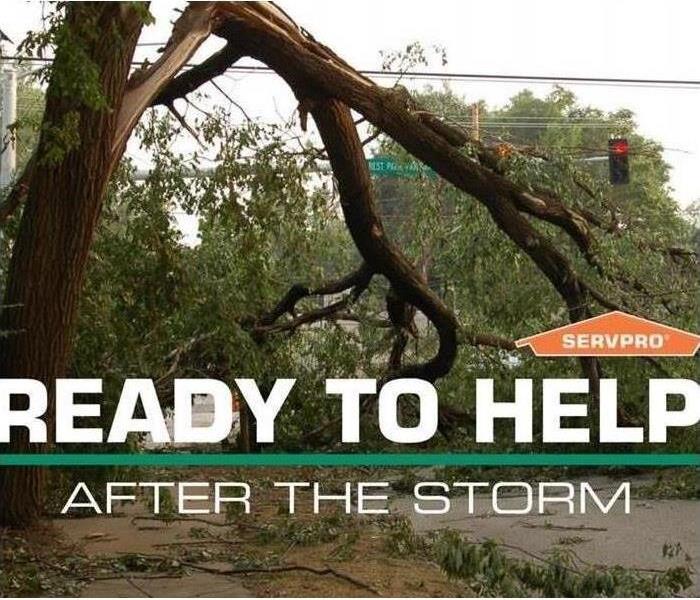 Quick Responses give Quick Results
Quick Responses give Quick Results
Storm damage occurs more often and can cause an immense amount of harm to your home or business. Heavy rain can cause flooding, powerful winds can cause roof damage and downed trees on your property as well as any other result of natural disaster. Some post-storm damage can create safety and health hazards, so having a strategy to deal with damage will help you to be ready to take steps immediately after the storm. Knowing you have a partner to help get your property back in order can help lessen the stress and make the process move quicker.
Take All Proper Safety Precautions
Heavy winds and rain can create an unlimited amount of physical hazards. These can include a collapse of roofing materials, window damage, collapsed walls or standing water in the basement or home interior. In addition, moisture can soak into furniture, carpeting, and building materials making the perfect environment for mold growth.
Shut off the main gas line if you smell gas. Beware of broken glass, exposed nails, and other sharp objects on the property. Contact a reputable property restoration company to help do basic tasks to secure your property and make it safe to use. If necessary, arrange for an alternative place for you and your family to live while your property is determined safe living conditions.
Photograph all of the Damage
If it is safe to move around your property, use your cellphone or a reliable camera to photograph the damage. This will make sure that you will have a record for your insurance company. This action will ensure that you are fully compensated, accurately.
Contact Your Insurance Company
Contact your insurance agent to notify them about the damage to your home or business immediately. The company will send out an adjuster to determine the extent of the damage so that payment for repairs can be made. This adjuster will work with SERVPRO of Bloomington/Pontiac on every step of your restoration process.
When a storm-related disaster strikes, it may seem overwhelming, but these steps can help you to begin the process of restoring your home or business, and your life, to normal.
SERVPRO Of Bloomington/Pontiac, we specialize in the remediation and restoration of homes and businesses that have suffered small or large loss from water, flood, wind, storm, fire damage, and smoke disaster.
Contact SERVPRO of Bloomington/Pontiac for more information and to answer any Storm Damage Loss.
Call us today
at 309-827-7500 or visit our website at www.SERVPRObloomingtonpontiac.com.
Like and follow our Social Media for more informational tips and promotions!
Facebook-Instagram-Twitter-YouTube-TikTok-Pintrest-Linkedin
Springtime Storm ready for Home OR Business
3/16/2022 (Permalink)
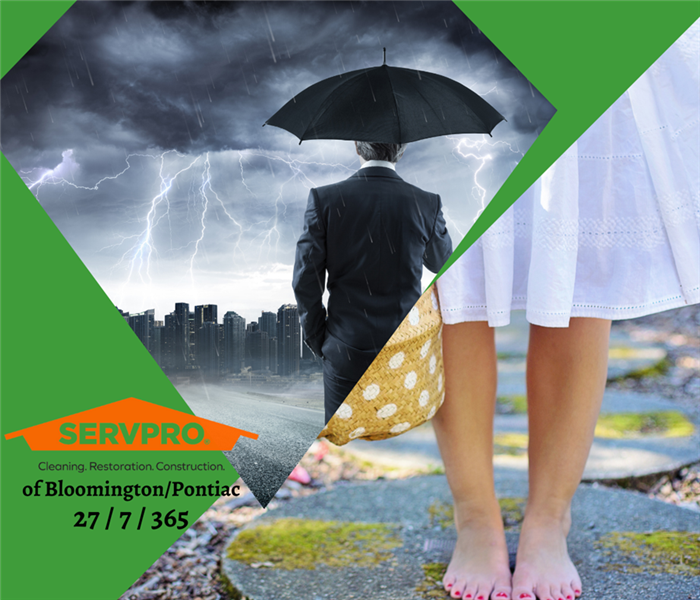 We look for the sunshine in any storm-why can't we also be ready for the storm to find the sunshine faster?
We look for the sunshine in any storm-why can't we also be ready for the storm to find the sunshine faster?
Sometimes a quote the infamous American writer, Mark Twain fits best:
“In the spring I have counted one hundred and thirty-six different kinds of weather inside of four-and-twenty hours.”
In Illinois-we know this all too well!
While 136 may have been a bit much, spring weather can be very unpredictable. Changing from sunshine to storms within a single, day even a couple of hours. 2022 is evolving to be one of the most active and dangerous spring severe weather seasons. Make sure you and your business are always prepared for the varying conditions and their potential threats.
For instance: during a spring storm, your business is at risk from the following situations,
Power Outages
Communication Disruption or Delays
Transportation Delays
Employee Absence for a variety of reasons
Damage to Facility/Equipment
Planning for spring weather and unknown risks is the same as planning for any other severe weather event. Use the guidelines below to ensure your safety and minimal business disruption, allow SERVPRO of Bloomington/Pontiac to be your ONE STOP SHOP for all things start to finish!
Monitor any Warning:
Monitor all local weather alerts on the radio, TV, and Internet. Social media is growing quickly to be a great method for tracking the news but only rely on reputable sources.
Seek Out Closest Shelter:
Always have an exit strategy prepared. Know how to get out of your area if evacuations are required and know where to cover. (Keep this posted at all times)
Make sure everyone within your company property is aware of your emergency preparedness plan, and that drills are practiced regularly. Hence, the response in an event is second-nature to everyone.
Have Back-Up with a Back-Up:
In case of a power failure, which is likely during a heavy storm, have on hand a backup generator and fuel to minimize downtime and continue to run necessary equipment. Have a way to contact emergency personnel if required.
Always backup your digital files on your computers on a regular basis. All copies should also be stored in an alternative safe location.
Perform Regular Inspections:
Thoroughly inspect the exterior and interior of your facility, as well as your equipment. Knowing that everything is functioning is required for proper day-to-day functioning but also for an emergency situation.
Restock Your Emergency Kits & Check Your Smoke Detectors Properly:
Ensure your emergency kits are all properly stocked and ready. Items to include Flashlights (with extra batteries), blankets, clothing, water, non-perishable food, first aid kit, and important documents and files (insurance, medical information, etc.) you may need to stay away from your business for several days. Also, if you haven’t done so recently, check the batteries in your smoke detector as well as make sure they are up to local code. This is for your home or business.
As you can see, the plan above is similar to all plans for a severe weather event. Just remember, once a warning is issued, you don’t normally have much time to prepare – So, take action now to be ready.
SERVPRO of Bloomington/Pontiac is here for your Disaster Restoration/Reconstruction needs. Our staff is trained on exactly how to repair damage issues and get your home or business back to the space you need.
Call us today at 309-827-7500 or visit our website at www.SERVPRObloomingtonpontiac.com.
Like and follow our Social Media for more informational tips and promotions!
Facebook-Instagram-Twitter-YouTube-TikTok-Pintrest-Linkedin
Being Storm Prepared!
2/17/2022 (Permalink)
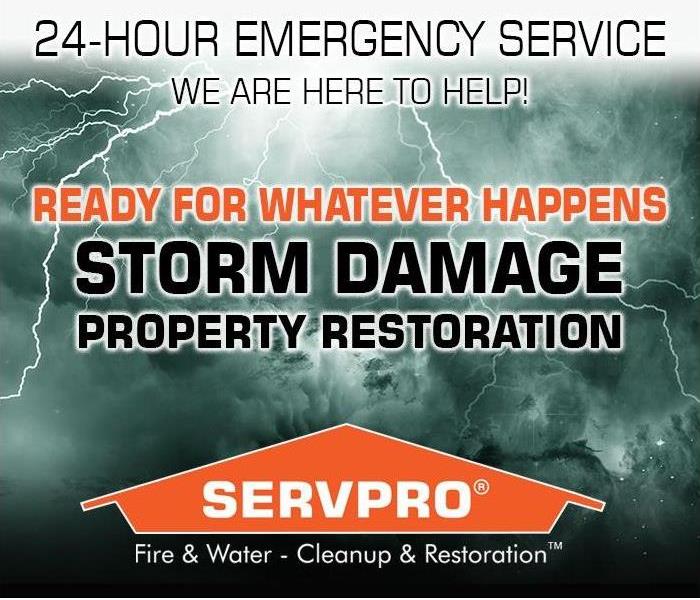 When disaster strikes, know who to call. SERVPRO is ready 24/7/365
When disaster strikes, know who to call. SERVPRO is ready 24/7/365
Winter Storm Checklist
Are you ready for any type of winter storm that hits? Storms are changing rapidly and affecting people far differently. Is your home as ready as you are? SERVPRO of Bloomington/Pontiac wants to make sure our clients and our community have every tool at their disposal. We are always ready and here to help when disaster strikes. We can help get your life back to pre-disaster.
In order to help be ready-use some of these tips, tricks and helpful fyi’s to be ready:
*Make A Plan: Be ready BEFORE any sort of Storm hits. Plan ahead. If you are in an area prone to winter weather, hurricanes, heavy rain, etc.-be sure to create a disaster plan for your family.
*Prepare Your Home and Your Car(s):
Weatherproof your home
-Insulate any water lines that would run along exterior walls. This is so your water supply will be less likely to freeze.
-Caulk and weather-strip all doors and windows.
-Insulate walls and the attic.
-Install storm or thermal-pane windows or cover windows with plastic from the inside.
-Repair roof leaks and cut away tree branches that could fall on your home or other structure during a storm.
-Have your chimney or flue inspected each year. If you want or need to use your fireplace-make sure it is ready.
-Install a smoke detector and a battery-operated carbon monoxide detector. These protect those in your home when trouble does strike.
Create an emergency car kit.
It is best to avoid traveling, but if travel is necessary, keep the following in your car:
-Cell phone, portable charger, and extra batteries
-Items to stay warm such as extra hats, coats, mittens, and blankets
-Windshield/Ice scraper
-Shovel (Portable)
-Battery-powered radio with extra batteries
-Flashlight with extra batteries
-Water and snack food
-First aid kit with any necessary medications and a pocket knife
-Tow chains or rope
-Tire chains/Ice slippers
-Canned compressed air with sealant for emergency tire repair
-Cat litter or sand to help tires get traction, or road salt to melt ice
-Booster cables with fully charged battery or jumper cables
-Hazard or other reflectors
-Bright colored flag or help signs, emergency distress flag, and/or emergency flares
-Road maps
-Waterproof matches and a can to melt snow for water
Steps that need to be taken BEFORE the storm hits
*Listen to your local weather forecasts and re-check your supplies
*Bring your pets indoors
*Check on your elderly neighbors and family
*Make sure the car is ready (with a full tank!)
*And don’t ever PANIC!
Springtime Weather-We got it!
2/17/2022 (Permalink)
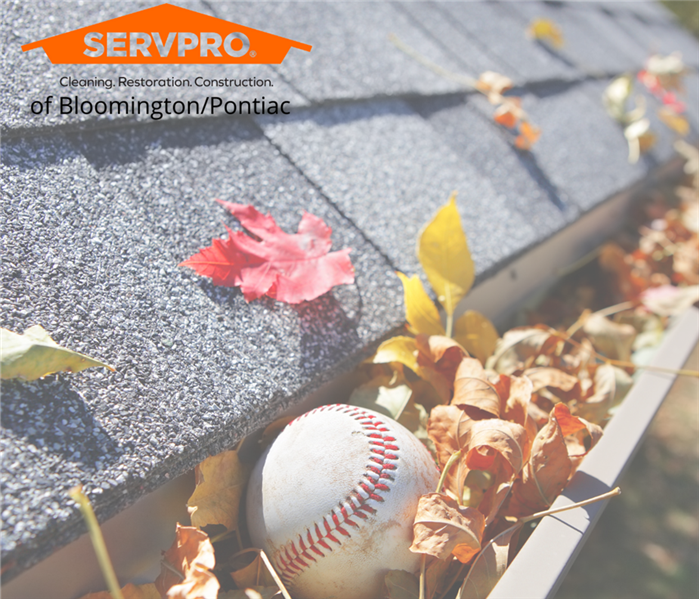 Do you know what is hidden in your gutters?
Surprise!!
Do you know what is hidden in your gutters?
Surprise!!
Prepare your home for spring weather and storms
We can’t stop mother nature. No matter how much we try, no matter how much we prepare-she still wins. The difference is-being prepared helps to minimize damage.
Springtime weather reminders
Let it flow. Let it flow!!
Remove fall and winter debris from your gutters, drains, and downspouts. This allows heavy rains to flow freely off your roof and away from your home. Be sure that downspouts are secure and that water is draining well away from your home and not toward your foundation. Add extensions if they are necessary.
Trim the trees. Hire professionals-Watch for Power lines!
Prune saggy limbs and branches so they don't snap off in a windstorm and land on your home or a power line. This can cause fire and or water damage. This could even potentially injure someone(s) in your home.
Check the pump(s).
If your home has a sump pump or two, test them to make sure they are clean and operable and that the outflow is draining properly. Consider using a battery-powered backup sump pump as the secondary. This will help to keep the system working if the power goes out. Furthermore, an automatic standby generator can ensure your sump pump and other electrical systems continue to run during power outages.
Stow your gear or lock’m down!
When strong winds are forecast, secure patio furniture, and other yard items or put them in your garage or a shed so they don't become dangerous projectiles. It also saves from having to replace items.
Cover up and close it up…
Close and secure storm shutters if your home has them. Keep blinds and shades drawn and tape or tack window coverings around the edges to help protect you from broken, flying glass. Tie thick blankets over vehicles that are exposed to the elements to diminish damage from hail (if they are outside).
If power outages are common in your area, prepare an emergency kit and keep it in a central location in your home along with a plan. Make sure everyone in your household is familiar with the plan.
And when that limb breaks and puts a hole in the kitchen-SERVPRO has the team to help put it back.
SERVPRO of Bloomington/Pontiac is here for your Storm Damage needs. Our staff is trained on exactly how to fix your issue and get your home back to the safe and beautiful space you want.
Call us today at 309-827-7500 or visit our website at www.SERVPRObloomingtonpontiac.com.
Like and follow our Social Media for more informational tips and other promotions!
Facebook-Instagram-Twitter-YouTube-TikTok-Pintrest-Linkedin
Send out the call!
7/2/2021 (Permalink)
One very large advantage to our nationwide brand at SERVPRO is the ability to reach out to each other.
SERVPRO franchises from across the country answered the call. These team members who drove through the night and will be gone for an extended amount of time-they are rockstars!
Our brand has the reach to help almost any area with any sort of disaster-our own home has been a prime example. As I traveled around with the Emergency Management Agency, we surveyed the damage and you can't miss the piles of the aftermath.
All of the basements, garages, living rooms, etc...where personal belongings were held-now cleaned out because water invaded. Our teams worked all day and night-all weekend-to help as many as possible.
For that, we can't thank them enough. Our teams, the teams from other states, the neighboring teams who worked with us, and anyone that has assisted in making it easier for us to do our job this last week.
Storm situations happen. They will continue to happen. They are tragic and they can be awful. However, we have seen how our area responded to this storm and it was magnificent. We appreciate everyone for their part - especially property owners. Knowing when to call for help, listening to advice, and being patient are fantastic virtues. We have seen this so much. This is a true testament to what Central Illinois is truly all about.
Keep watching our social media pages for further updates and reach out with any questions. Thank you, from the bottom of our hearts - we appreciate you!
Your Friends at SERVPRO of Bloomington/Pontiac
4 steps to summer storm readiness and ERP
6/22/2021 (Permalink)
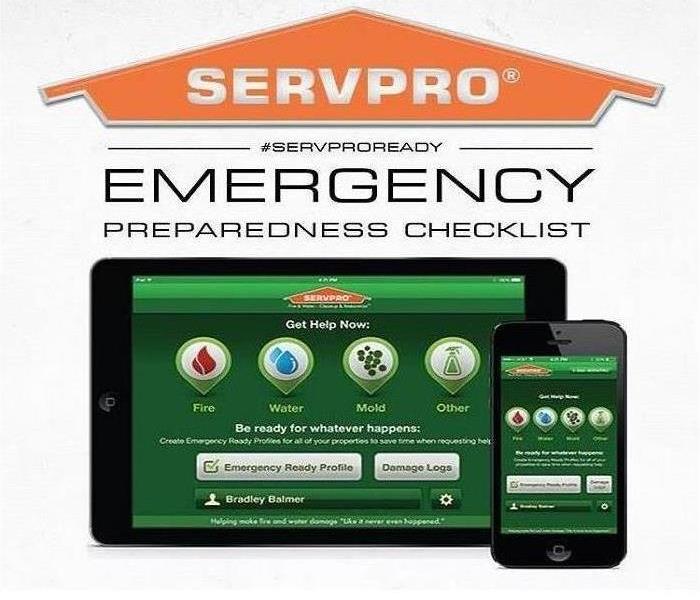 We are ready for any disaster. Are You?
We are ready for any disaster. Are You?
Summer storms are unpredictable. These storms tend to target just neighborhoods or towns rather than entire counties. If you are one of the folks unfortunate enough to be in the path, your business is vulnerable to fallen trees, hail damage, fire from lightning, wind damage, losing all or part of your roof, flooding, and power outage.
Only minutes later, the storm passes, and you are shocked by the extent of the damage and how quickly it manifested.
Is Summer Storm Damage Preparedness Important?
As a business owner or manager, one needs to prepare and react to keep people working safely and stay productive. Here are 4 summer storm damage prevention tips to help your business survive and thrive after the sudden summer storm and reduce downtime from storm damage commercial property loss.
Your preparation and reaction to commercial storm damage will be the difference between successful business or weeks of downtime leading to a loss of revenue, and the threat of your competitors picking up valued customers. Prevention and planning along with executing your Emergency Response Plan (ERP) will keep your business up and running after the storm.
#1 Preventative Maintenance
We all tend to let maintenance items slip as the seasons quickly change. Seasons move from spring to summer and we worry more about baseball than we do maintain any property. Be proactive by scheduling an exterior building inspection on your calendar.
We have a simple checklist to get you started.
- Check the condition of the paint and walls.
- Check for broken windows and doors.
- Check the condition of all railings and steps.
- Check for plants growing on the building or its foundation (and even the roof).
- Clean the roof. Use extreme care when working in high places.
- Clean roof drains and gutters. Test drains and downspouts by flushing them with water. Remove debris.
- Inspect the general condition of the roof.
- Inspect gutters for adequate anchoring and tighten, add more if necessary.
- Inspect the stack and all roof penetrations, reseal.
- Clean up any debris found.
#2 Check Your Commercial Storm Damage Insurance Coverage
It’s devastating to discover that your insurance policy doesn’t have proper commercial storm damage coverage after a loss.
Along with your preventative maintenance and inspection, schedule an annual policy review with your insurance agent. Be sure to discuss coverages, exclusions, limitations and be certain that you understand them.
#3 Photograph and Document the Condition of Your Commercial Property Routinely
A photographic inventory of your business equipment, inventory organization, interior, and exterior of the business property is essential when navigating a storm damage claim. Your timestamped photographs will accelerate the process when working with your insurance adjuster after the storm damage has occurred and provides proof of adequate maintenance of the commercial property-This helps to receive the proper reimbursement.
#4 Initiate Emergency Response Planning (ERP) with SERVPRO®
It’s vital to the health of your business to have a current emergency plan in place and to update it annually. SERVPRO® of Bloomington/Pontiac Emergency Response Plan (ERP) program guarantees that you and your employees know how to prepare and react to summer storm commercial property damage – as well as other major disasters. Your ERP with SERVPRO® of Bloomington/Pontiac, will give you peace of mind that you have a strategic partner at the ready to respond to your need 24/7/365.
Storm damage to your home or business
6/21/2021 (Permalink)
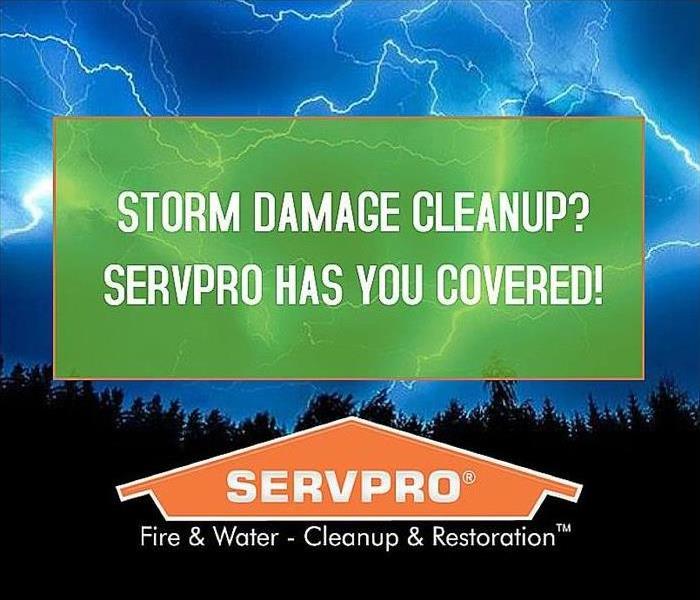 As storm season hits, do you know who to call?
As storm season hits, do you know who to call?
Violent weather can wreak havoc on buildings of all shapes and sizes. Wind damage can be a hazard to the structure of a building, by loosening the shingles or tiles on the roof. This can cause moisture such as rain and snow to infiltrate into the protective surface of the roof, which will result in the wood swelling and later on disintegration and can even become moldy. This can lead to a sagging ceiling and even more problems.
Elements such as wind, rain, hail, and lightning can result in turning people’s lives upside down, this is why having a storm damage restoration service on standby - to help this type of emergency is always a good option.
If caught in time, a restoration company will be able to rescue your building from greater structural issues, by inspecting the roof and replacing the dilapidated areas. After sealing and renovating the roof, they will then address the ceiling and restore it to the previous condition.
Here are some of the activities you can expect from your storm restoration service professionals.
- Whether it is a business or residence, the restoration company will come to your property. Their trained experts do a thorough examination of the interior and exterior of your building. This will help them discover the level of the damage. In many cases, the restoration company will discuss the renovation plans with you and your insurance.
- When everything is estimated and the work begins, then the clock starts. The next step will depend on what type of damage is present, and determining the type of equipment the professional will use. They will use specialized pumps and vacuums to remove water from the affected areas.
- Generators can be brought in to operate the dehumidifiers and air movers so mold and mildew do not have a chance to make matters worse. Using customized cleaners, the specialist will then disinfect hard surfaces and shampoo salvageable carpets as well as apply deodorant to combat any odors.
The restoration process should be handled by professionals-properly handled storm damage can be taken care of easily and painlessly. Contact SERVPRO of Bloomington/Pontiac for all your storm damage needs.
After the Storm......
3/15/2021 (Permalink)
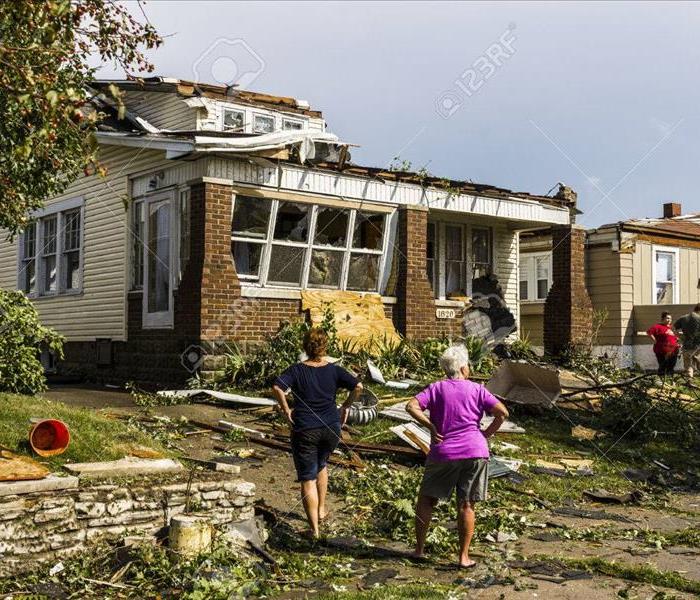 Let SERVPRO of Bloomington/Pontiac take some of the stress out of repairs after a storm. Call anytime-24/7/365
Let SERVPRO of Bloomington/Pontiac take some of the stress out of repairs after a storm. Call anytime-24/7/365
Knowing what steps to immediately take after storm damage can make a major difference. It impacts everything from your furniture, your floors, your insurance claim to even your vehicles. Making the right decisions immediately afterwards can put your family, belongings and your wallet at risk. As challenging as recovery can be after a disaster, you can take some solace in the fact that so many individuals have gone through similar experiences-you CAN get through this. Finding folks who can relate to your experience can makes finding the direction you need a little easier.
Once you know what to expect and learn all you can before a storm hits. This is the best way to be more prepared to restore things to normal as quickly as possible.
Steps to Take After Storm Damage:
Check Your Home for all Damage
Review and Assess the possible Damage
Contact Your Insurance Provider for next steps
Avoid Additional Damage
Choose the Right Contractor to Restore Your Home
Not all damage will be immediately obvious. Keep in mind there could be slippery areas, electrical lines broken and exposed, loose floor boards or ceiling tiles, etc. This makes it more important that before you do a thorough walk-thru, follow all safety tips.
How to Stay Safe When Checking Your Home After Storm Damage:
Before going out, check the local news to make sure that your area has been determined safe.
Watch out for hazards such as broken glass and exposed nails.
Always assume that downed power lines are energized and dangerous. Stay at least 10 feet away and alert the police and utility company quickly.
Avoid standing water, particularly if there are nearby downed power lines.
Where possible, avoid checking for water or storm damage after dark.
If you do so, carry a flashlight and be on the lookout for open flame. This will alleviate the risk of harm from a fire or explosion from a damaged gas line.
If you do smell gas such as carbon monoxide—or suspect a leak—shut off the main gas line, open the windows, and immediately go outside. Notify the gas company and the proper authorities of the situation and don’t return until it is deemed that your home is safe.
Review and Assess the Damage to Your Home:
Before you contact your insurance company to start a claim, you need to go take pictures of the damage. These pictures are often used to help the insurance adjusters access the damage safely. There are several areas of your home that are most vulnerable to storm damage.
Contact Your Insurance Provider:
If you have insurance, you should get compensation if your home or business is damaged by a storm. You need to document all the loss you’ve suffered as a result of the storm. Take photos of the damage before anything has been moved or removed. Also, always document any extra costs that you incur because of the damage.
Don’t forget to keep receipts for hotel costs and other temporary living expenses. This is all needed for your insurance claim.
Your insurer will usually coordinate the work to be done to restore your home, so make sure that you’re on top of knowing who is coming to your home and when.
Avoid Additional Home Damage Where Possible:
When the time comes to start fixing damage- begin with what you can fix yourself.
Often, the storm might not have damaged your home completely and it can be restored with simple repairs. If you can properly repair some of the damage, you should get to it immediately as you seek professional repair services for the more complicated repairs.
Immediate repairs can also help prevent more damage. If water and wind are getting into your home (through a broken window for example) you should go ahead and board up the window as soon as possible-this will avoid further water damage.
If you don’t feel comfortable doing the job yourself, you may need a board-up service to secure your property. SERVPRO of Bloomington/Pontiac works 24/7 and can be there day or night for emergency service.
Choose the Right Contractor to Restore Your Home:
It’s important to hire professionals that are trustworthy. A contractor that can help you recover your home is important and essential to make your world right again. Poor or incomplete restoration will leave you with an unhealthy home for your family.
A great restoration company can take that responsibility off of your shoulders. Simply choose the company, and they will handle all communications between contractors and insurance companies.
SERVPRO of Bloomington/Pontiac has decades of experience with fire, water, trauma, pathogen, reconstruction, restoration and general cleanings. Call on us for your service needs.
24/7/365
Winter Storm's punishment to your roof.
2/15/2021 (Permalink)
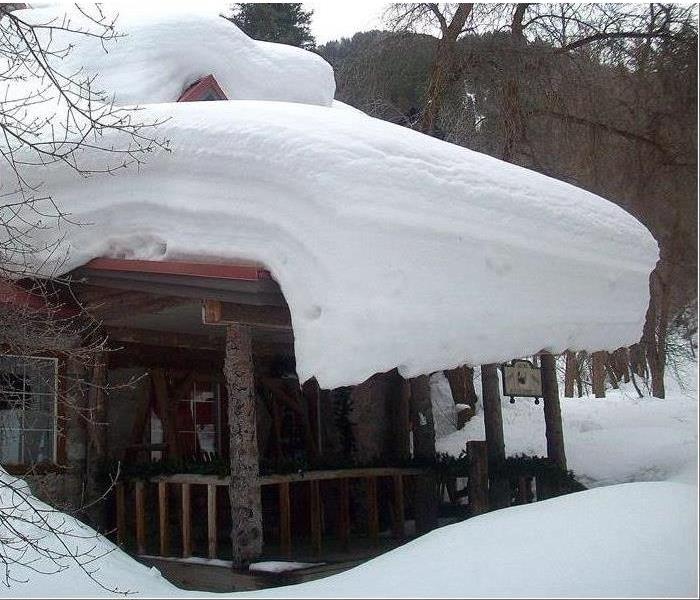 Winter storm
Winter storm
In Illinois we get every end of the spectrum when it comes to weather. Up until recently it’s been cold with some flurries—but February seems to want to make itself known. Hopefully we can get through another Winter season without our homes taking on major damage.
However, hope alone doesn’t work. We have to prepare our homes and be ready for what to do if the ugliest of situations do occur. SERVPRO of Bloomington/Pontiac is the largest restoration company in the area, we take caring for your home seriously! Read on for important tips to keep your home safe and warm and to prevent winter damage this season.
Always keep Snow build up at a minimum.
Roofs are engineered to handle all sorts of elements. Everything from rain to hail to snow to extreme heat-proper maintenance can keep your roof and your home safe and dry. Snow, rain, and debris commonly collect on your roof- especially in flatter areas.
But this doesn't mean that snow buildup won't become a problem on pitched roofs. The best way to protect your roof from snow damage is by investing in a good quality snow rake. A snow rake is a simple tool that allows you to remove excessive snow buildup from your roof. This can all be done while standing safely on the ground.
To use, gently pull the rake towards you down the slope of your roof, being careful to stand away from falling snow and debris. This simple tool is a proactive way to protect your roof in the winter months. Never use any type of defrosting material on your roof-it can damage your shingles and/or other roofing materials.
If you hold off on using a snow rake, make sure your gutters have been properly attached and your downspouts cleared. This way as the massive amounts of snow melt and run down your roof-it will properly drain away from your house and prevent further damage from water on your foundation.
Remember to remove Ice Build-Up to Prevent Ice Dams & Winter Damage
Just as much as you keep an eye out to remove snow build-up, you should also keep an eye on your roof for ice build-up. Ice can be especially dangerous when left accumulating for too long. The biggest areas of ice accumulation are the gutters. While icicles may look beautiful and like a normal sign of winter, they are a major threat to your roof. You can easily prevent icicles from growing by simply knocking them down with a broom or any other safe device that gives you plenty of clearance while cleaning the Ice.
We do strongly advise you to use caution when removing ice from your roof. If you whack an icicle too hard, you could potentially wipe out your entire gutter if you knock it too hard. Gutting your gutters of icicles is especially important in preventing what is perhaps the worst winter worry when it comes to your roof: ice dams. If you notice an ice dam forming it is important to address the issue right away. An ice dam is essentially a large clump of ice near the edge of your roof. If left long enough an ice dam will freeze your gutter and block snow from naturally falling off your roof.
You can prevent ice dams from forming by first staying on top of snow and icicle build-up. Make sure that water can flow freely from your gutters as ice begins to melt. Use an ice pick to gently chip away at large clumps of ice-safely-, removing them piece by piece from your gutter. As always, remember to stand away from your roof to protect yourself from falling objects. If you're not sure how often you need to clear away snow and/or ice from your roof, check the weather forecast. If it looks like your area will be getting six inches of snow, this is generally a good time to get your home ready.
As always, SERVPRO of Bloomington/Pontiac is here when that unwanted water finds it way into your home. Our experienced and professional team is ready to help you with all your home’s needs.
Be ready when the Storm hits...
1/11/2021 (Permalink)
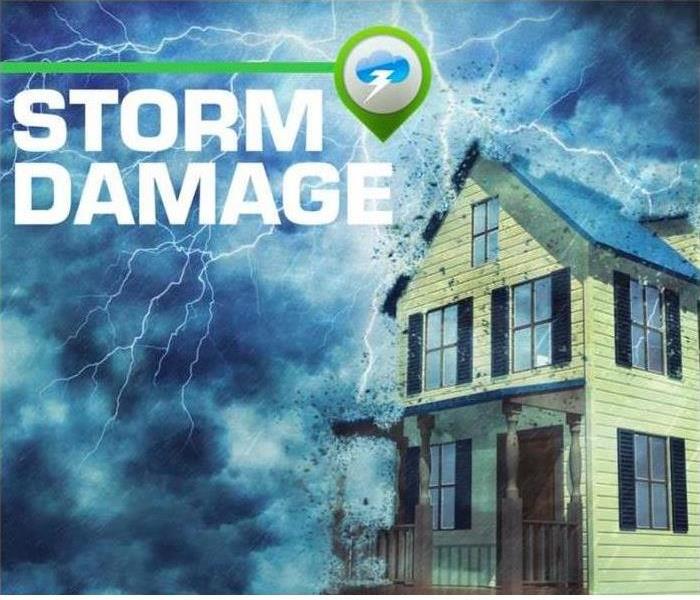 You know who to call
You know who to call
Storm damage occurs all the time and can cause an immense amount of harm to your home or yourself. Heavy rains cause flooding, powerful winds cause roof damage, downed trees cause property damage and excessive ice could cause all of the above. Some post-storm damage can create safety and health hazards. Always having a strategy to deal with damage will help you to be ready to take steps immediately after the storm.
The quicker you are able to mitigate and repair damage left by a storm-the faster your home and life can get back to what it was….pre-storm.
Take all necessary safety precautions-prior and during a storm….
Heavy winds and rain create physical hazards such as collapsed roofing materials, window damage, collapsed walls or standing water in the basement or home interior. Furthermore, moisture can soak into furniture, carpeting, and building materials making the perfect environment for mold growth that can cause health effects.
Shut off the main gas line if you smell gas. Beware of broken glass, exposed nails, and other sharp objects on the property. Contact SERVPRO of Bloomington/Pontiac to help do basic tasks to secure your property. If necessary, arrange for an alternative place for you and your family to live while your property is being restored to safe living condition.
Photograph All Damage…
If it is safe to move around your property, use your cellphone or a camera to photograph the damage so that you will have a record for your insurance company. This action will ensure that you are fully compensated. If you annually photograph things around your house-this will also help to know what is in your home and make the claims process even easier.
Contact Your Insurance Company…ASAP
Contact your insurance agent to notify them about the damage to your home immediately. The company will send out an adjustor to determine the extent of the damage so that payment for repairs can be made. They can also help to let you know steps you need to take and where to even start.
Look Into Federal Disaster Assistance for Natural Disasters
The federal government may have declared the area affected by the storm as a disaster area that is eligible for low-cost loans to help restore your property to normal. You will be required to file documents to receive these loans and/or have photos. Keep a timeline of whom you talked to, what happened and pay attention to what your insurance company can help you with.
When a storm-related disaster strikes, it may seem overwhelming, but these steps can help you to begin the process of restoring your home and your life.
SERVPRO of Bloomington/Pontiac is here. We provide 24-hour emergency disaster service. We specialize in board-up, mitigation and restoration of homes and businesses that have suffered small or large loss from water, flood, wind, storm, fire damage and smoke disaster. At SERVPRO, We make it “Like it never even happened.”
Contact Us 24/7/356 at 309.827.7500
Or visit us at www.SERVPRObloomingtonpontiac.com
Roof Damage happens anywhere
6/29/2020 (Permalink)
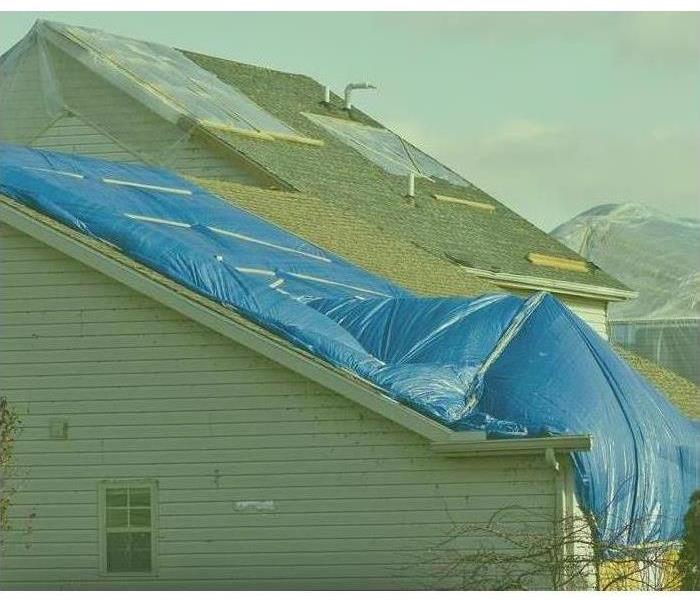 We can help get you back on track
We can help get you back on track
What to look for on your roof, after a STORM.
It doesn’t matter where you live in the United States. Every location has its own hazards for roofing. Weather varies from Hurricane to Hail to Snow to Tornadoes-it all wreaks havoc on a home…. especially a roof.
So, what do you do after a Storm? How do you identify roof damage, and what should you do about your roof after a major storm?
Types of Roof Storm Damage
Wind
Hurricane-force winds, which are 74 mph or greater, can cause visible damage to your home’s roof. High winds can remove or tear shingles- leaving the underlayment, roof deck, or waterproofing material exposed to the elements. Those then can become saturated and leads to damage inside the building.
During less severe storms, sudden, sharp gusts of wind can lift and even curl up the shingles. When shingles are installed, they’re purposefully overlapped to create a water-tight seal. This lifting and curling can break this seal, potentially leaving your roof exposed to damage from wind-driven rain.
Hail
Hailstorms typically are relatively short and rarely last for longer than 15 minutes. Hailstones can leave dents or marks in shingles and knock shingle granules loose. This is problematic because these granules protect your roof against rain and sun damage. Hail can also ruin the pleasing aesthetic appearance of your roof’s surface. This damage happens fast-and will need to be repaired quickly as well.
Standing Water
Roofs without proper drainage can experience problems with standing water after big rainstorms, especially in uneven areas. Clogged gutters cause backed up rainwater under your shingles, which allows moisture to potentially penetrate the underlayment or the roof deck. Water then can seep into a building causing mold and damage.
Debris
Depending on how severe the storm can be or what kind of storm, debris can end up on the top of your roof, everything from small branches to larger tree limbs. Large objects can dent or impact the surface of the shingle, leaving that area of the roof vulnerable to moisture intrusion, whereas lighter branches may not be as much of a problem.
SERVPRO of Bloomington/Pontiac can help tarp most buildings and work on repairing any issues that move towards the inside of your structure.
We can handle any size storm
6/29/2020 (Permalink)
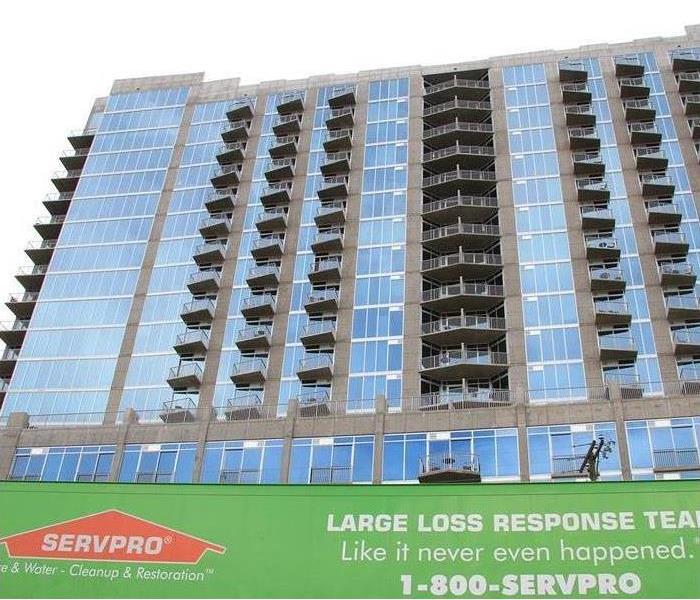 From several homes in one area to a Large building-Storm preparedness is the key.
From several homes in one area to a Large building-Storm preparedness is the key.
No Job is ever described as Too Large for SERVPRO
Our Commercial Large Loss Division Teams are the best in the business. SERVPRO of Bloomington/Pontiac can have a Large Loss Team in any of our Locations within an hour. This team is built up of the best in restoration and these specialists are qualified and ready to go. Every large loss is supervised by a commercial operations manager to help ensure seamless communication and timely mitigation. No detail is left untouched.
At SERVPRO, the difference is our ability to dispatch trained production professionals and keep costs affordable through the strategic placement and oversight of temporary labor. Get the professionals, call SERVPRO of Bloomington/Pontiac.
Those whom have utilized Large Loss Teams:
Hospitality
Property Managers
Universities
Municipalities
With the ability to mobilize local command centers as well as the resources of more than 1,700 Franchises nationwide, no disaster is too big. Call our office to schedule a time to go over Large Loss Teams and know ahead of time what we do and how we do it. Let us take care of your property.
Call SERVPRO of Bloomington/Pontiac at 309-827-7500
Storms cause massive Flooding, be aware
6/22/2020 (Permalink)
 Now what?
Now what?
Our area, just like many other areas-have experienced high water volumes this spring. When this happens-SERVPRO of Bloomington/Pontiac is ready to help. Our staff is fully trained with the proper equipment to keep Storm damage to a minimum.
Act Fast
When a flood happens, you need to act fast to dry out any wet items, particularly structural materials like walls and flooring.
Watch for Pooling Water
Look for places around your property where water pools, and channel it away from buildings. Make sure gutters and downspouts are clear of debris and they are directing water as intended.
Raise Storage Goods
Use shelving and/or pallets to keep storage items off the floor to reduce the impact of small floods. In many situations, raising boxes just a few inches will be enough to keep storage goods above the water line.
Maintain Sump Pump
If you have a sump pump, check to be sure it is operational before water starts rising. Consider a back-up generator to ensure your pump works when you need it most. Contact your insurance agent to add coverage in case your sump pump fails.
Cut Power if Necessary
As rising water approaches the level of electrical outlets, you risk having a live current flow through all the water. Cut the power if you can safely do so without standing in water. Otherwise, evacuate and contact an electrician to cut the power before you go back in for recovery.
Keep Storm Drains Clear
If you see water pooling around a storm drain, the drain may be clogged with debris. Clearing the debris will help keep the water flowing away from your neighborhood.
Be Aware on the Road-Be extremely cautious
Be careful when driving during spring storms, especially when you hear flash flood warnings. Never drive into fully submerged roadway. The water surface will be at the same level as the pavement you can see. This view can deceive you into thinking the water is shallow because you cannot see how the road dips under the surface.
We are here to help. The Storm hits-don’t panic-contact SERVPRO of Bloomington/Pontiac!
Helpful Tips for Storm Damage
6/22/2020 (Permalink)
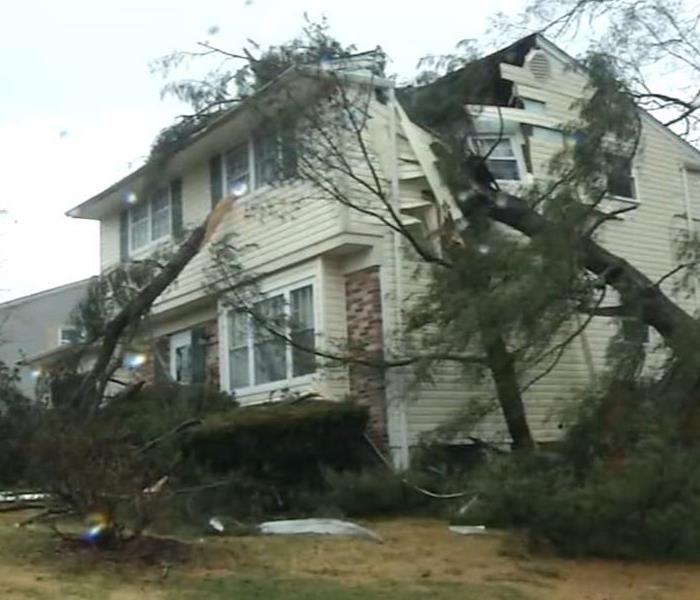 When a tree strikes, A window Breaks or Lightning hits.....We have your back!
When a tree strikes, A window Breaks or Lightning hits.....We have your back!
Be mindful of Storm Damage to a Building:
- Stay away from any damaged buildings or structures until authority has had a chance to examine it and determine that it’s safe.
- Wait until daylight to return to buildings so it’s easier to see and avoid any hazards.
- Leave your home or other building if you hear any shifting or strange noises- this could mean it’s about to fall.
- If you smell gas or suspect a leak, leave your house/building and contact emergency authorities right away!!! Don’t turn on the lights, light matches, smoke, or do anything that can cause a spark. Don’t return to the building until you’re told it’s safe to do so.
- Keep children and pets away from the affected area until cleanup has been completed.
- If electrical circuits and electrical equipment have gotten wet or are in or near water, turn off the power at the main breaker or fuse on the service panel. If you must enter standing water to access the main power switch, then call an electrician to turn it off.
- Never turn power on or off or use an electric tool or appliance while standing in water. Ever.
- Do not connect generators to your home’s electrical circuits without the approved, automatic-interrupt devices. If a generator is on line when electrical service is restored, it can become a major fire hazard and it may endanger line workers helping to restore power in your area.
If a storm hits, SERVPRO of Bloomington/Pontiac can board up, tarp and work with you on cleanup/restoration projects. Get your home back to pre-storm status with our help.
We can do it, start to finish.
Building a Storm Kit
6/19/2020 (Permalink)
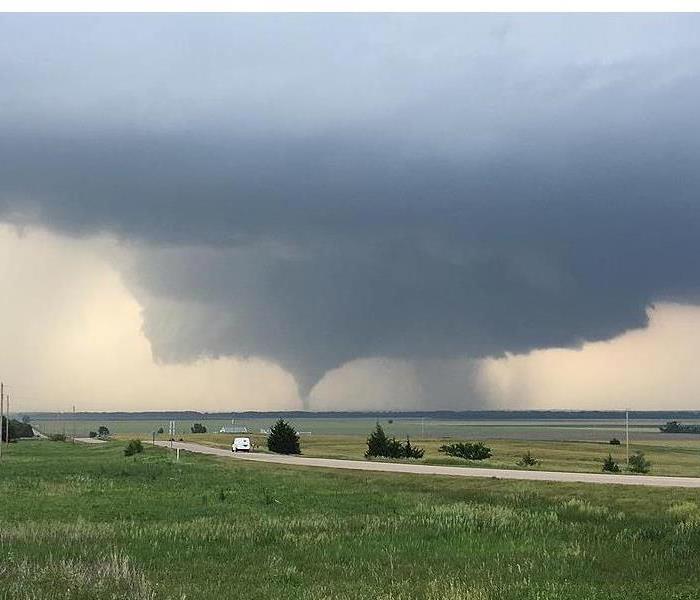 Are you ready for a Storm when it hits?
Are you ready for a Storm when it hits?
Build a Storm Emergency Kit
Part of being prepared is to have a Storm Emergency Kit prepared. Below is a list of items that should be included in a basic Storm kit. Be sure to have the kit in a sealed container and in a safe location that if you have to take cover during a storm-you could still access.
Keep in mind specifics that may not be included: a toy for comfort, maybe a few family photo copies and safely sealed digital copies of important documents.
Supplies should Incude:
- Backpack
- Bottled Water
- Non-Perishable food (Can Opener)
- Eating utensils
- Flashlight with extra batteries
- First Aid Kit-with book
- Tissues and Toilet with bags for disposal
- Writing utensils and paper
- Sleeping bags or Warm blankets-per person
- Wrench or Pliers to turn off utilities
- Personal Hygiene kits
- Whistle to call for help
- Battery powered radio and NOAA weather radio
- Formula, Diapers and other supplies if you have a baby in the home
- Dust mask to filter air
- Extra pet supplies-if you have pets
- Plastic Sheeting and Duct tape
- A change of clothes for each person
Also include a jacket, hat, gloves and closed toe shoes for walking.
- Rain gear/supplies
- Cash
- Paper Towels
- Fire Extinguisher/Large baking soda
- Cards/Games
- Extra Zip close bags
- Extra of any required medications as well as basic, over the counter medications.
When Life Turns Upside Down
6/19/2020 (Permalink)
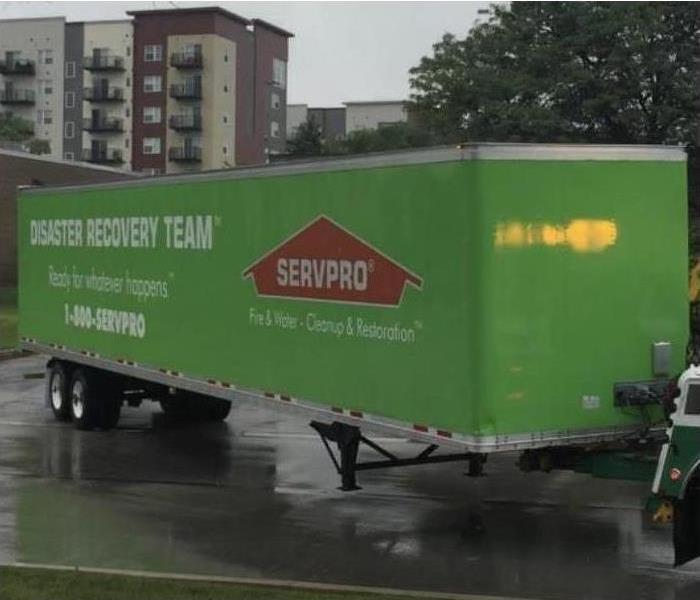 Large or small-can can get it all!
Large or small-can can get it all!
When life turns upside down
Storm damages can turn life upside down. They happen at anytime and can really happen without much notice. Between heavy rain, powerful wind and lighting-you can never know what to exactly prepare for.
There are precautions that you can take to keep your family safe-but what do you do about properties? How do you prepare for the literal unknown? Heavy rains cause flooding. Winds can cause roof damage or even uproot trees. Lightning can spark a fire…...all in one swoop. Have a strategy. Stay calm-be ready.
It is important to act quickly and to stay safe.
Heavy winds and rain can create hazards such as collapsed roofs, window damages, damaged walls or standing water in the basement or home interior. In addition, moisture can soak into furniture, carpeting, and building materials making the perfect environment for mold growth that can cause health issues.
Shut off the main gas line if you smell gas. It may also be a good idea to shut main water valve off as well.
Beware of broken glass, exposed nails, and other hazards that can be around. Contact a local, reputable property restoration business to help do basic tasks to secure your property. If necessary, arrange for a place for you and your family to stay while your property is being restored.
Remember to: Photograph your damage and personal property items, contact your insurance company and look into federal disaster assistance if possible.
When a storm-related disaster strikes, it may seem overwhelming. But these steps can help you to begin the process of restoring your home, and your life, to normal.
SERVPRO of Bloomington/Pontiac provides 24-hour emergency disaster services. We specialize in the mitigation and restoration of homes and businesses that have suffered small or large loss from water, flood, wind, storm, Fire and smoke disaster.
We are here to help.
Interesting Storm Facts
6/26/2019 (Permalink)
Interesting Facts About Thunderstorms
- The first stage of a thunderstorm, called the developing stage, occurs when a cumulus cloud is pushed upward by air. In the developing stage there is not usually much rain but lightning can be seen.
- The second stage of a thunderstorm, called the mature stage, occurs when the rising warm air reaches warmer air and it spreads out into a 'cap'. This creates frozen water droplets that fall to the earth, melting along the way - unless the updraft is very strong which creates hail. It is during this stage that lightning and thunder and strong winds and rain occur.
- The third stage of a thunderstorm, called the dissipating stage, occurs when a downdraft pushes to the ground essentially cutting off the thunderstorm's inflow.
- The multi-cell cluster thunderstorm is the most common type, characterized by inner mature storms at the center and dissipating storms around the outer edge, and can include weak tornadoes.
- The multi-cell line thunderstorm is characterized by a line of severe thunderstorms that are either in front of or part of a cold front, and can include hail, strong wind, tornadoes and waterspouts.
- The super-cell thunderstorm is characterized by extremely strong wind, powerful updrafts, very severe weather, and strong tornadoes. Most tornadoes originate in this type of storm.
- The severe thunderstorm is characterized by strong winds, funnel clouds and sometimes tornadoes.
- The sound of thunder is made when lightning's heat flash causes the air to expand rapidly, and then shrink rapidly. This violent air disturbance causes the sound of thunder.
- To be classified as a thunderstorm lightning must be present.
- People often hide under trees to escape thunderstorms. It's a dangerous place because trees are often struck by lightning.
- Thunderstorms often occur in warm, humid conditions.
- Some thunderstorms look like cauliflower in the atmosphere.
- The hail produced in some thunderstorms breaks windows, kills wildlife, and even dents cars.
- Lightning isn't the only danger caused by thunderstorms. They can also produce flash floods, strong damaging winds, and fires.
- As soon as thunder is heard it is best to find safe shelter. Thunderstorms can begin very quickly and if you are able to hear the thunder then you are close enough to be struck by the storm's lightning.
If your central Illinois home has been damaged by storms call SERVPRO of Bloomington/Pontiac. 309-827-7500.
Thunderstorms And Your Electronics
6/24/2019 (Permalink)
A thunderstorm is an atmospheric disturbance that involves lightning and thunder. It may be accompanied by torrential rain, hail or high winds. A severe thunderstorm can cause flooding, fires, power failures and electrocution, and result in serious damage.
While surges due to thunderstorms are rare, you should at the very least unplug your high-ticket electronics, like your TV, computer and gaming console.
Be safe
An important thing to remember when pulling the plug on your electronics, is that you can be electrocuted if you touch a cord during a surge. It's best to unplug items before a storm gets to your area.
Will a surge protector help?
Many people think that surge protectors that you plug into the wall will save their electronics from power surges due to storms, however that is not the case.
Surge protectors are meant to protect against common, small surges in the electrical grid that happen from time to time. They can help reduce the power surge before it reaches your device, but they are not designed to protect items from the massive surge of electricity that happens from a lightning strike during a storm.
What can protect your devices during a storm is a whole house surge protector or suppressor. These are much more expensive than an outlet surge protector and are meant to be installed on your house's main electrical panel.
If you experience Storm damage or flooding, contact SERVPRO of Bloomington/Pontiac. 309-827-7500
Lightning Safety
6/21/2019 (Permalink)
On average, lightning causes more deaths in the U.S. than tornadoes, floods, or hurricanes. One study puts lightning deaths in the U.S. at 7,741 between 1940 and 1981. And some research suggests that these numbers may be too low by 30 to 50 percent. Illinois experiences about 2-3 deaths and 8 serious injuries per year.
Lightning heats the surrounding gases in the air to around 50,000 degrees! This causes a rapid expansion of the air which produces thunder. A single lightning stroke also contains an enormous amount of electricity, enough to supply power to several homes for a month. The heat and electricity pose the greatest risk to the individual. Most lightning deaths and injuries occur when people are caught outdoors.
SERVPRO of Bloomington/Pontiac
KEEPING YOURSELF SAFE FROM LIGHTNING
- Stay alert for fast-changing weather conditions. It does not have to be raining where you are for lightning to be a threat. Many people are struck before the rain begins or after it ends at their location.
- Avoid being the tallest object in the area, and stay away from other tall objects such as a small group of tall trees.
- Unplug all unnecessary appliances and stay off the phone.
- Get inside a sturdy building. Do not stand by open windows, doors or on patios during a thunderstorm.
- Get off farm equipment, golf carts or other open vehicles. A hard top car with the windows shut is relatively safe
- Use the “flash to bang” technique. Sound travels about 1 mile every 5 seconds. When you see the lightning count the seconds until you hear thunder. If 5 seconds elapse, the thunderstorm is one mile away. Ten seconds equals two miles and 15 seconds means the lightning bolt was three miles away.
- What is a “safe” distance from lightning? There is no absolute rule, but consider taking prompt protective action if lightning is occurring within 3 miles of your location. Be aware that lightning can strike the ground ten or more miles away from the thunderstorm with blue sky above!
- Lightning may be about to strike near you if you feel your hair stand on end or your skin tingle. Crouch down or drop to your knees, but do not lie flat on the ground.
If your home or business has experienced storm or lightning damage call SERVPRO of Bloomington/Pontiac 309-827-7500
Storm Power Outage Preparation
6/20/2019 (Permalink)
In central Illinois each season brings its weather-related threats, including heavy wet snow or ice storms in the winter, thunderstorms and lightning in the spring and summer, and wind and heavy rain in the fall.
By making some simple preparations, you can make outages less stressful for your family and yourself.
- Keep your power company phone numbers by the telephone.
- Keep a storm kit ready. You should not wait until a storm is bearing down on central Illinois to prepare a kit, because some outages happen with little warning. Storm kits should include the following:
- A first aid kit and family prescription medications.
- Extra blankets for each member of the family.
- At least one regular (corded) phone. The convenience of cordless phones has made them very popular, but they stop working when the power goes out. A corded phone will still work during most outages, allowing you to call out for information and to report the outage. Even if you have a cellular phone, keep in mind that the backup power to cell towers may shut down if the outage lasts long enough.
- At least one battery-operated radio. During lengthy outages (six hours or more), local radio stations can become increasingly important sources of information.
- At least one flashlight for every member of the family.
- Batteries for your flashlights and radios.
- Canned food for three days and a non-electric can opener. Most outages are over in hours, of course, but severe storms may leave damage that last several days. In most instances, having a three-day supply of food will take a family through the worst of the storm. For obvious reasons, families will want food that does not require heating or refrigeration.
- Three gallons of drinking water per family member. A healthy adult will need one gallon of water per day, so this will prepare your family for a three-day outage.
- When a storm is on its way, gas up your car before it arrives. During widespread disasters, gas stations may not have electricity to pump gasoline.
- If you have a medical need for electricity, make sure your power company knows. During lengthy outages, most power companies makes an extra effort to provide updated outage information to those members who need electricity to power oxygen pumps or other medical equipment.
- If you have a medical need for electricity, have a relocation plan which answers the following questions:
- What services, electrical and otherwise, must I have to protect my health in an emergency?
- Where will I go to find those services if my home is without power for more than a few hours?
- Who will take me there in an emergency?
- Have I made sure that person knows I am relying on them for transportation in an emergency?
SERVPRO of Bloomington/Pontiac is here for your storm recovery needs. 309-827-7500
Recovering After Storm Damage
6/18/2019 (Permalink)
A severe storm can change everything in the blink of an eye. It doesn’t always have to be a tornado to cause destruction in your home or office, and poor restoration can leave you with an unhealthy home for your family. If you know what to expect and learn all you can before a storm hits, you’ll be more prepared to restore things to normal as quickly as possible.
Stay Safe
Before inspecting the damage to your home keep safety in mind:
- Watch out for hazards such as broken glass and exposed nails.
- Always assume that downed power lines are energized and dangerous. Stay at least 10 feet away and alert the police and utility company.
- When inspecting your home at night, use a flashlight instead of a candle (or anything with an open flame). This will alleviate the risk of a fire or explosion from a damaged gas line.
If you do smell gas—or suspect a leak—shut off the main gas line, open the windows, and immediately go outside. Notify the gas company and the proper authorities of the situation and don’t return until they’ve deemed your home to be safe.
Review and Assess the Damage
Windows and doors are vulnerable to wind damage and flying debris. Inspect your windows for cracks, holes, broken panes and damaged frames. Watch out for shards of glass, and be sure to board up broken windows until they can be fixed.
Look for damage to siding, paint, bricks and other exterior surfaces of your home. Also check outdoor appliances, like air conditioning units. You’re looking for dings, dents, cracks, splitting, holes, breaks chipping and discoloration.
If there was extended power outages and you have a sump pump, you may have standing water in your basement.
- Do not step in standing water without first making sure power is turned off to avoid risk of electrocution
- Re-engage sump pump to discharge water from the area or call a plumber if the pump is damaged.
Avoid Additional Damage
You may need a board-up service to secure your property so don’t wait. SERVPRO of Bloomington/Pontiac can be there day or night for emergency service.
Contact Your Insurance Provider
Your insurance provider will instruct you on the next steps to take in making a claim and provide you with a claim number and a list of local emergency service providers.
Choose the Right Restoration Company
It’s important to hire a professional and trustworthy restoration company to help you recover your home and restore your lives. Poor or incomplete restoration could leave you with an unhealthy home for your family. Any time there is water damage, mold can begin growing immediately as well. It’s critical to address this as soon as possible to avoid additional damage and health risk. At SERVPRO of Bloomington/Pontiac we have seen it all when it comes to Storm Damage. Whatever your situation is, we will start the process of restoring your home or business.
Tornado Season
6/18/2019 (Permalink)
Knowing what to do when you see a tornado, or when you hear a tornado warning, can help protect you and your family. During a tornado, people face hazards from extremely high winds and risk of being struck by flying and falling objects. After a tornado, the wreckage left behind poses additional injury risks. The National Weather Service (NWS), Homeland Security and Emergency Management (HSEM), and the Centers for Disease Control and Prevention (CDC) provide excellent resources on staying safe during and after a tornado, below are some of the highlights.
Preparing for a Tornado
- Stay informed. Check the forecast regularly to see if you're at risk from tornadoes.
- Sign up for notifications. Learn how your community sends tornado warnings. Some communities have outdoor sirens and others send media alerts.
- Create a plan. Have a family plan that includes an emergency meeting space, such as a basement or storm cellar with no windows.
- Practice your plan. Practice your plan so that your family is prepared when a tornado strikes.
Stay Safe During a Tornado
- Stay informed. Continue to listen to local news or a Weather Radio to stay updated.
- If you are at home: Go to your basement, safe room, or room away from windows. Bring your pets with you.
- If you are at work or school: Follow the tornado drill and go to your tornado shelter quickly and calmly. Stay away from windows.
- If you are in a vehicle: Being in a vehicle during a tornado is not safe. Drive to the closest shelter if possible. If it is not possible, get down in your car and cover your head or seek shelter in a low lying area, such as a ditch or ravine.
- If you are outside: Being outside during a tornado is not safe. Seek shelter immediately. If it is not possible, get down in a low lying area, such as a ditch or ravine and cover your head.
After a Tornado
- Stay informed. Continue to listen to local news or a Weather Radio to stay updated.
- Contact family and loved ones. Save your phone calls for emergencies. Phone systems may be down after a disaster. Use text messaging or social media to communicate with family and loved ones.
- Assess the damage. Stay clear of fallen power lines or broken utility lines. Do not enter damaged buildings until you are told they are safe.
- Check for injuries. Do not attempt to move seriously injured people unless they are in immediate danger of further injury. Get medical assistance immediately.
- Be careful during clean-up. Wear thick-soled shoes, long pants, and work gloves.
SERVPRO of Bloomington/Pontiac Storm Damage Cleanup and Restoration
Flood Event Tips
7/3/2018 (Permalink)
Spring showers can often lead to flooding conditions in central Illinois. These tips will help reduce the impact spring floods that my happen on your property.
Watch for Pooling Water
Look for places around your property where water pools, and channel it away from buildings. Make sure gutters and downspouts are clear of debris and they are directing water as intended.
Maintain Sump Pump
If you have a sump pump, check to be sure it is operational before water starts rising. Consider a back-up generator to ensure your pump works when you need it most. Contact your insurance agent to add coverage in case your sump pump fails.
Raise Storage Goods
Use shelving and/or pallets to keep storage items off the floor to reduce the impact of small floods. In many situations, raising boxes just a few inches will be enough to keep storage goods above the water line.
Cut Power if Necessary
As rising water approaches the level of electrical outlets, you risk having a live current flow through all the water. Cut the power if you can safely do so without standing in water. Otherwise, evacuate and contact an electrician to cut the power before you go back in for recovery.
Keep Storm Drains Clear
If you see water pooling around a storm drain, the drain may be clogged with debris. Clearing the debris will help keep the water flowing away from your neighborhood.
Be Aware on the Road
Be careful when driving during spring storms, especially when you hear flash flood warnings. Never drive into fully submerged roadway. The water surface will be at the same level as the pavement you can see. This view can deceive you into thinking the water is shallow because you cannot see how the road dips under the surface.
Act Fast
When a flood happens, you need to act fast to dry out any wet items, particularly structural materials like walls and flooring.
At SERVPRO of Bloomington / Gibson City / S. McLean County we Answer the Phone Ready to Help
Call Today - 309-827-7500
When Storms or Floods hit Central Illinois, SERVPRO is ready!
6/13/2017 (Permalink)
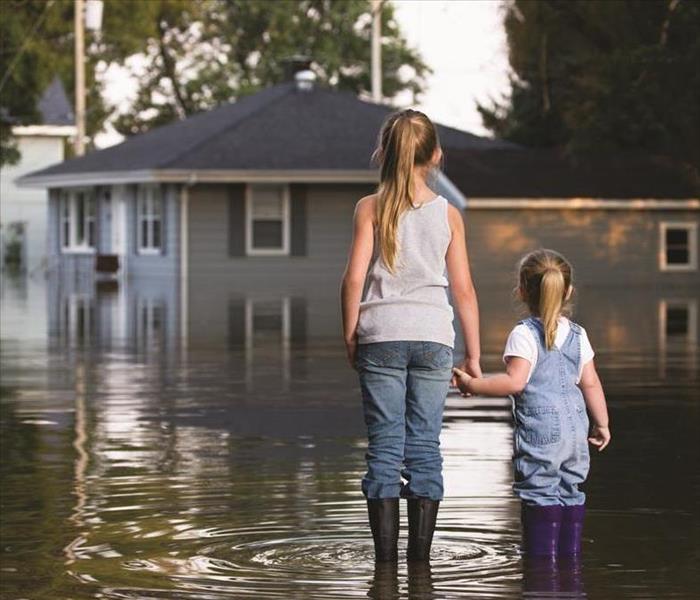 Our highly trained crews are ready to respond 24/7 to storm or flood damage.
Our highly trained crews are ready to respond 24/7 to storm or flood damage.
SERVPRO of Bloomington / Gibson City / S. McLean County specializes in storm and flood damage restoration. Our crews are highly trained and we use specialized equipment to restore your property to its pre-storm condition.
Faster Response
Since we are locally owned and operated, we are able to respond quicker with the right resources, which is extremely important. A fast response lessens the damage, limits further damage, and reduces the restoration cost.
Resources to Handle Floods and Storms
When storms hit Central Illinois, we can scale our resources to handle a large storm or flooding disaster. We can access equipment and personnel from a network of 1,650 Franchises across the country and elite Disaster Recovery Teams that are strategically located throughout the United States.
Have Storm or Flood Damage? Call Us Today 309-827-7500
SERVPRO of Bloomington / Gibson City / S. McLean County home page






 24/7 Emergency Service
24/7 Emergency Service






